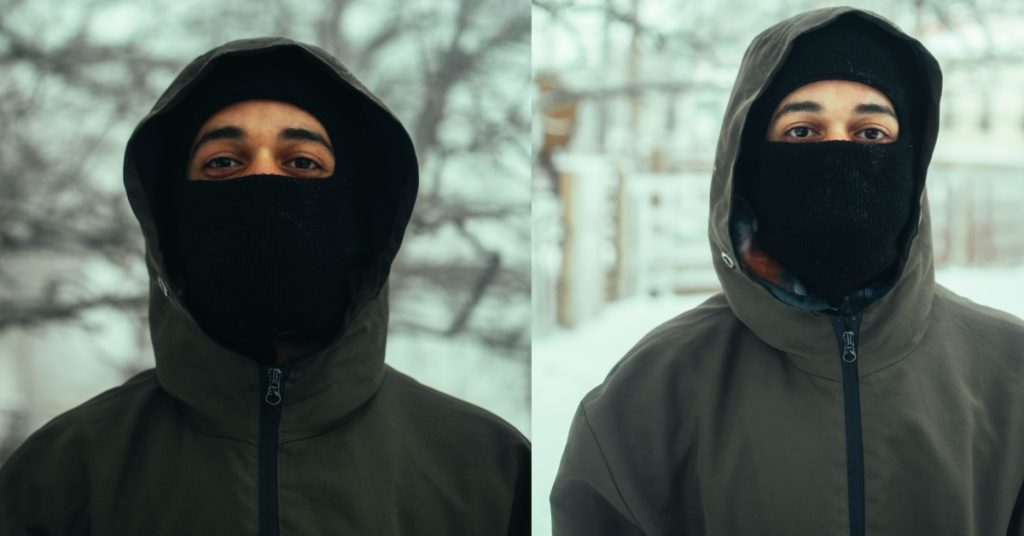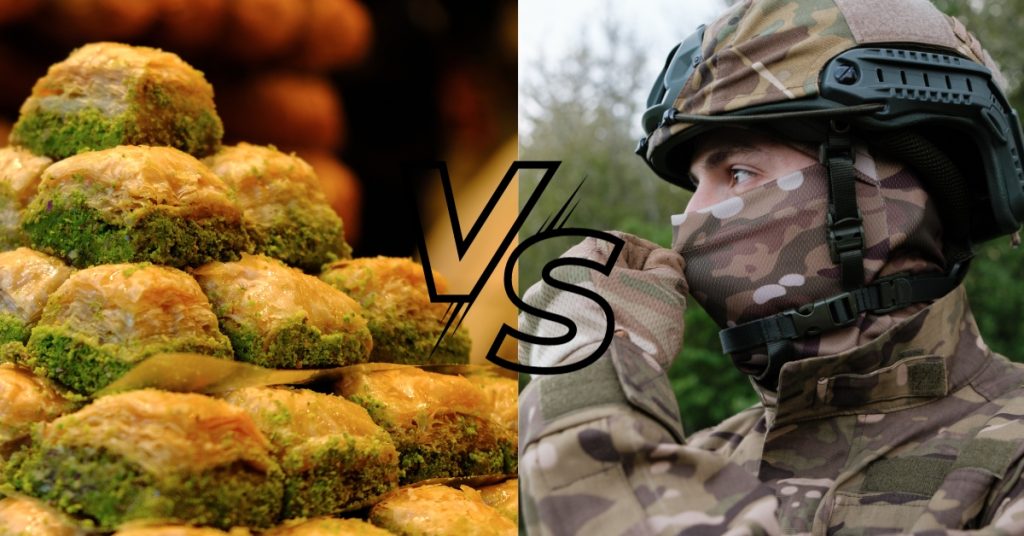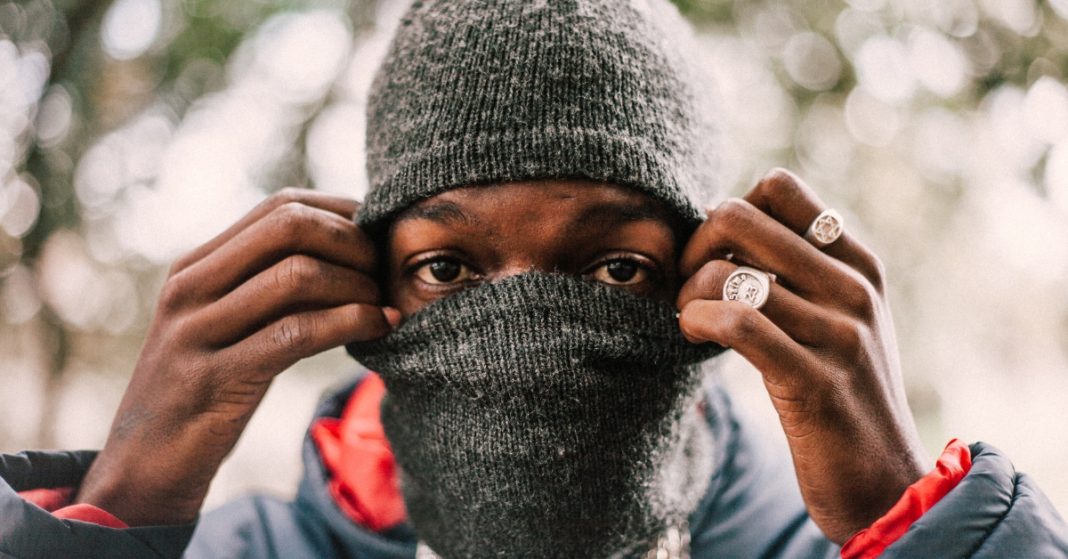Welcome to the world of balaclavas! Far from just a piece of winter wear, the balaclava has carved its niche in both fashion and practicality. Whether you’re braving a blizzard, gearing up for a motorcycle ride, or adding an edgy twist to your outfit, the balaclava is your go-to accessory. But wait, it’s not a dessert – that’s baklava we’re thinking of! Yes, we’ll clear up this amusing mix-up too.
Table of Contents
Today, we’re diving deep into the balaclava’s journey – from its military origins to its emergence on high fashion runways. Ever wondered how to pronounce ‘balaclava’ correctly, or how to keep your favorite headgear in top shape? We’ve got you covered. Join us as we unravel the story behind this versatile piece, its cultural impact, and why it’s more than just a winter essential. Let’s get started!
Balaclava: More Than Just a Winter Mask
When we talk about balaclavas, we’re delving into a rich history that goes beyond just keeping our faces warm. This headgear, often mistaken as a simple winter accessory, has a fascinating origin story.
Origin and History of the Balaclava
The balaclava first made its appearance during the Crimean War in the 1850s. British soldiers stationed in the town of Balaklava needed something to protect them from the harsh Crimean winter. What they came up with was a knitted garment that covered the entire head and neck, leaving just part of the face exposed. This practical invention soon got its name from the town it originated in, and thus, the ‘balaclava’ was born.
Materials and Designs
Fast forward to today, and you’ll find balaclavas made from a variety of materials:
- Wool: The classic choice, known for its warmth.
- Fleece: Lighter than wool and dries quickly.
- Synthetics: Think polyester and nylon, great for moisture-wicking.
Design-wise, there’s a lot to choose from:
- Full-face: Covers everything but your eyes.
- Open-face: Leaves your entire face exposed, great for milder weather.
- Convertible: Offers flexibility to switch between full and open-face.
Contemporary Use
Today, balaclavas aren’t just about battling the cold. They’ve found their way into fashion runways and streetwear. Skiing, snowboarding, motorcycling, or even a trip to the grocery store on a chilly day – there’s a balaclava for every occasion.
Balaclavas: Evolving Through Time

The evolution of the balaclava has been quite the journey. Let’s break it down:
Military and Civilian Use
Originally a military staple, the balaclava has seamlessly transitioned into civilian life. In the military, it’s about camouflage and protection. For civilians, it’s about comfort and style. This transition showcases the versatility of this headgear.
Choosing the Right Style
Picking the right balaclava can be fun:
- For Extreme Cold: Go for wool or fleece-lined options.
- For Active Use: Look for breathable synthetics.
- For Fashion: Explore designs with unique patterns or bold colors.
Role in Modern Fashion
Balaclavas have made a splash in the fashion world:
- Designer Touch: High-end brands have reimagined balaclavas with luxury materials.
- Street Style: Pair them with oversized jackets or hoodies for an urban look.
- Celebrity Influence: Seen on celebrities, they’ve become a statement piece.
Balaclavas have come a long way from their military roots, morphing into a multifaceted accessory. Whether it’s for practical use or making a fashion statement, there’s a balaclava out there for everyone. Let’s embrace this unique piece and enjoy its blend of function and style!
Pronunciation of Balaclava
Ever found yourself stumbling over how to pronounce ‘balaclava’? You’re not alone! Let’s break down the phonetics to clear any confusion.
Phonetics of Balaclava
Pronouncing ‘balaclava’ can be simplified when we look at it phonetically. It’s pronounced as \băl-ə-klä-və. The stress is on the second syllable, making the ‘a’ sound as in ‘apple’. The ‘clava’ part is quite straightforward, rhyming with ‘lava’.
Common Mispronunciations
Several common mispronunciations pop up:
- Saying ‘baklava’ instead of ‘balaclava’ – remember, one’s a headgear, the other’s a sweet dessert!
- Overemphasizing the ‘ba’ – it’s more of a quick, soft ‘ba’, not like the ‘ba’ in ‘bat’.
- Mispronouncing the ‘clava’ – it should rhyme with ‘lava’, not pronounced like ‘clave’.
Influence of Different Languages
The word ‘balaclava’ has navigated through various languages, which can influence its pronunciation:
- In Russian, it’s closer to ‘balaklava’, reflecting its Crimean roots.
- The British pronunciation tends to be brisker, while the American version might draw out the vowels a bit more.
- Non-native English speakers might apply the phonetic rules of their language, leading to variations.
Remember, while pronunciation can vary slightly based on regional accents, the key is to understand and be understood. So next time you talk about balaclavas, you’ll be doing so with newfound confidence in your pronunciation!
Balaclava vs Baklava: Clearing Up the Mix-Up

It’s a common and often amusing mistake: mixing up ‘balaclava’, the headgear, with ‘baklava’, the sweet dessert. Let’s delve into why this mix-up happens and explore the distinct backgrounds of these two vastly different items.
Balaclava: The Headgear
As we’ve already discovered, the balaclava is a form of headgear, originally designed to protect soldiers from harsh weather. Its name comes from the town of Balaklava in Crimea, linked to its military origins during the Crimean War.
Baklava: The Dessert
Baklava, on the other hand, is a completely different ball game. It’s a rich, sweet pastry made of layers of filo, filled with chopped nuts, and sweetened with syrup or honey. Its origins are a bit more contested, with various Middle Eastern, Central Asian, and Mediterranean cultures laying claim to its creation.
Cultural Origins
- Balaclava: Its roots are firmly planted in 19th-century military history, originating in Eastern Europe.
- Baklava: This dessert’s history is a tapestry of Middle Eastern, Greek, and Ottoman influences, dating back possibly to the 8th century BC.
The Mix-Up and Humorous Anecdotes
Why the confusion? It mostly comes down to the similarity in pronunciation and unfamiliarity. It’s easy to see how ‘balaclava’ could be misheard or mistyped as ‘baklava’ and vice versa. Here are a couple of humorous outcomes:
- Imagine walking into a store during winter and asking for a ‘baklava’ to keep your face warm – the perplexed looks would be priceless!
- Or, a friend asks for a ‘balaclava’ for their birthday, and you show up with a box of sweet pastries.
In essence, while balaclavas and baklavas couldn’t be more different in function and form, their similar-sounding names often lead to some delightful confusion and laughter. So next time you’re discussing either, you’ll be well-prepared to clarify, much to everyone’s amusement and appreciation!
Balaclava in the Spotlight: Popular Culture and Symbolism
The balaclava, once a practical piece of military gear, has made its way into the limelight of popular culture. Its representation in movies, music, and media has transformed it from a mere cold-weather accessory to a symbol with various cultural connotations.
Representation in Movies, Music, and Media
Balaclavas have been featured in numerous movies and TV shows, often used to portray characters in stealthy or rebellious roles. They’ve been sported by spies, revolutionaries, and even superheroes, adding an air of mystery or anonymity to characters.
In music, balaclavas have become a part of the image for some artists, especially in genres like punk and hip-hop. They are used to make a statement, a symbol of defiance or non-conformity. Music videos and album covers featuring balaclavas can be striking and provocative, leaving a lasting impression.
Symbolism in Cultural Contexts
The symbolism of balaclavas varies greatly depending on the context:
- Military and Rebellion: In some cultures, balaclavas are seen as a symbol of militaristic strength or rebellion. They’ve been worn in protests and uprisings as a sign of solidarity and anonymity.
- Fashion Statement: In the fashion world, balaclavas have been reimagined as a bold accessory. They symbolize edginess and a break from conventional styles.
- Urban Culture: In urban settings, balaclavas often signify toughness or street savvy, a part of the ‘urban warrior’ look.
The balaclava’s journey through popular culture is a testament to its versatility and the various meanings it can embody. Whether it’s on the big screen, in a music video, or on the streets, the balaclava continues to capture our imagination and redefine its role in our cultural narrative.
Keeping Your Balaclava in Top Shape: Care and Maintenance
A balaclava, like any cherished piece of clothing, demands proper care and maintenance to ensure it lasts through many seasons. Whether it’s a snug wool number or a sleek synthetic blend, here’s how you can keep your balaclava in pristine condition.
Best Practices for Balaclava Maintenance
- Read the Label: Always check the manufacturer’s care instructions. Different materials require different care.
- Gentle Washing: Hand wash your balaclava in cold water with a mild detergent to maintain its shape and fabric integrity. For machine wash, use a gentle cycle.
- Avoid Bleach and Strong Chemicals: These can damage the fibers and fade the colors of your balaclava.
- Dry Properly: Lay it flat to air dry. Avoid hanging, as it can stretch out the fabric. Keep it away from direct heat sources like radiators or sunlight.
Washing and Storage Tips
- Regular Washing: Balaclavas can accumulate oils, sweat, and dirt, especially if worn frequently. Wash them regularly to keep them fresh and hygienic.
- Use a Mesh Bag for Machine Washing: If machine washing, place your balaclava in a mesh laundry bag to prevent snagging and tangling with other clothes.
- Storage: Once completely dry, store your balaclava in a cool, dry place. Avoid storing it in plastic bags where moisture can build up; instead, opt for a fabric bag or a drawer.
- Seasonal Storage: If you’re storing your balaclava away for the off-season, consider adding a sachet of lavender or cedarwood to ward off moths and keep it smelling fresh.
With these simple yet effective care and maintenance tips, your balaclava will remain a cozy, stylish, and durable companion, ready to face the elements or make a fashion statement whenever you need it. Happy wearing!
To Wrap It Up!
As we’ve journeyed through the world of balaclavas, we’ve uncovered much more than just a piece of winter wear. From its rich history stemming from the Crimean War to its modern-day status as a fashion and cultural icon, the balaclava has proven its versatility time and again. We’ve learned not only how to pronounce it correctly but also how to distinguish it from its sweet namesake, baklava. We’ve seen its portrayal in popular culture and understood the symbolism it carries in different contexts.
Caring for your balaclava is just as important as wearing it, ensuring it remains a lasting part of your wardrobe. Remember, whether you’re using it for practical warmth, making a fashion statement, or expressing a cultural identity, the balaclava is an accessory that adapts to your needs and style.
So, the next time you don a balaclava, you’ll not only be equipped to face colder climates but also appreciate the rich tapestry of history and culture it brings along. Stay warm, stay stylish, and keep exploring the many faces of the balaclava!
FAQs
Is balaclava a Russian word?
Balaclava is not originally a Russian word; it derives from Balaklava, a town in Crimea, and entered the English language during the Crimean War.
What is a balaclava used for?
A balaclava is used for warmth, protection from the elements, and sometimes for anonymity in various activities like skiing, biking, or fashion.
Is it a ski mask or a balaclava?
A ski mask and a balaclava are essentially the same; both cover the head and neck, leaving parts of the face exposed.
Why do people wear Shiestys?
People wear ‘Shiestys,’ a term for certain balaclavas, often for fashion, influenced by popular culture and music, particularly by rapper Pooh Shiesty.

